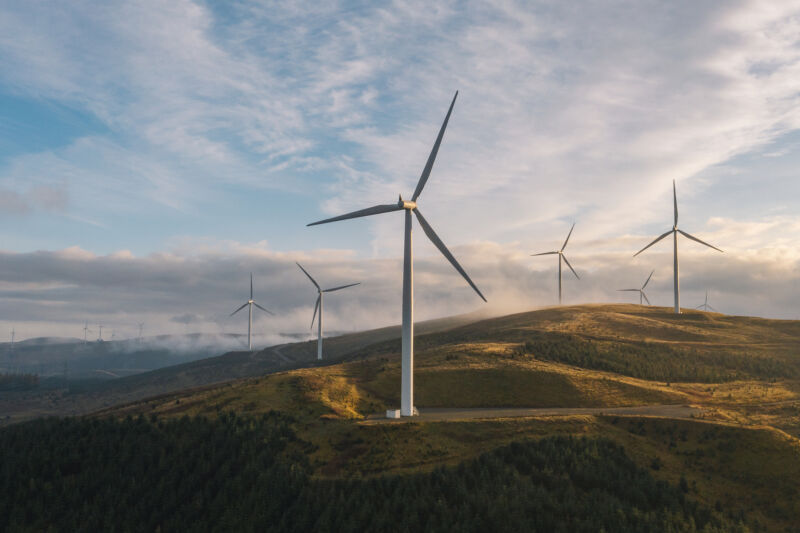
On Tuesday, the US National Academies of Science released a report entitled “Accelerating Decarbonization in the United States.” The report follows up on a 2021 analysis entitled, “Accelerating Decarbonization in the US Energy System.” When the earlier report was prepared, the US didn’t have a decarbonization policy, although the growth of natural gas and renewables was dropping the emissions involved in producing electricity. Within the following year, the US passed an infrastructure law, the CHIPS and Science Act, and the Inflation Reduction Act (IRA), all of which contained provisions intended to help cut the US’s emissions in half by 2030. The Environmental Protection Agency has also formulated policies that should radically reduce the emissions of generating electricity.
In other words, shortly after the report’s release, the US formulated a plan to accelerate decarbonization and a target of a 50 percent emissions reduction by 2030.
Rather than pat themselves on the back, however, the experts who prepared the original report recognized that the US’s climate goals require it to reach net-zero emissions by mid-century, and that will require lots of policy changes beyond the ones already in place. The new report is largely a call for people to start thinking of what we need to implement to ensure emissions keep dropping after 2030.
A changed landscape
The Biden administration has set intermediate and long-term climate goals for the US. The first involves cutting the country’s greenhouse gas emissions by 2030. Its plan for reaching that goal is heavily focused on decarbonizing transportation and the electric grid. The former will primarily be accomplished through incentives for electric vehicles included in the IRA. The law also includes incentives for efficient appliances and items like heat pumps, which should help the drive toward electrification and help limit the additional demand placed on the electric grid.
The IRA also has significant tax breaks for wind and solar power, which have become the cheapest sources of new generation even without the tax incentives. Combined with the EPA’s planned regulation of fossil fuel generation and incentives for existing nuclear plants in the infrastructure law, this should go a long way toward decarbonizing the electric grid.
The new report cites various analyses that indicate that these policies are necessary steps toward the longer-term goal of seeing the US reach net-zero emissions by the middle of the century—they’re consistent with what we’d need to do to get there.
That’s the good news. The challenge is that these policies are largely focused on accelerating recent trends. The timeline to 2030 is tight, and accordingly, the Biden administration has chosen to do the easiest things first. The timeline to 2050 will also involve doing all the hard things—decarbonizing things like air travel, shipping, and industrial processes, and/or performing enough carbon capture to offset anything we can’t eliminate emissions from.
The new report is partly a re-evaluation of the committee’s earlier report in light of the climate policies that have since been implemented. But it’s also a look beyond 2030 to determine what we must do to get the more difficult decarbonization steps done. Ultimately, the report argues that we need to start thinking about goals and policies for these later steps now, or we risk being unprepared for meeting the challenges.
Rapid change
The experts who contributed to the new report recognize that getting to net zero is a major challenge that requires significant revisions in a lot of US society. So its recommendations are sweeping in scope. It’s not unusual for a report from the National Academies to make 10–20 specific recommendations; Accelerating Decarbonization has 10 categories of recommendations alone, with 81 individual recommendations among those.
That scope will end up creating problems. “Significant gaps and barriers are to be expected because nothing of this scale and with this diversity of goals has ever been attempted,” the report states. To help manage these, it calls for detailed and transparent reporting and analysis of our efforts towards reaching net zero. Ensuring that data is kept up to date will also be critical because we’ve already seen how quickly some things change: “Using data even a few years old could lead to claims that the energy transition would be prohibitively expensive, as those data would not reflect current costs given their rapid recent descent.”
A lot of the report is also focused on making the US’s energy system more equitable. “Up to 355,000 deaths per year are caused by air pollution from fossil fuels combustion, which disproportionately occur in communities of color and low-income households,” the report notes. Decarbonizing the energy system will necessarily improve that situation, but the authors call for ensuring that the less fortunate also get some of the benefits. These would include a share of the new jobs created, as well as financing that ensures access to things like efficient appliances and distributed solar—the latter goal will require reforms to the financial markets, the report notes.

